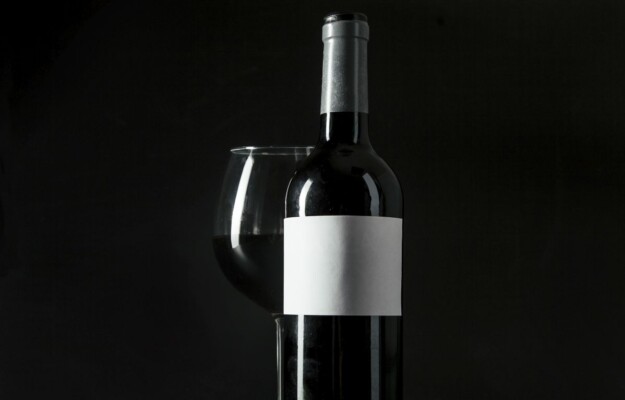More than breaking news, what has upset the wine world would be defined better as an earthquake. Last Friday, The European Commission published the Guidelines regarding the new rules affecting wine labeling, just a couple of weeks before their application has been scheduled, on December 8th (The Regulation was originally published in December 2021). Therefore, this effectively turns the tables, since the new interpretation will affect how labels should look. The sector fears that this could trigger a real revolution, since a significant number of labels risk ending up in the garbage can, as they would no longer be usable, while labeled bottles already on the market are “trembling” over the danger of possible fines. There is no time to start over from scratch, considering the “weight” of investments already made, which has prompted the voice of the wine planet’s representatives to take no time at all in asking for a quick “about-face”.
The Comité Européen des Entreprises Vins (CEEV), an organization that represents the industrial and commercial wine companies in the European Union, reflected on the news and stated, “the European Commission Guidelines regarding the new rules on wine labels published Friday, include, just two weeks before the new rules will be applied, a new interpretation of European Union legislation, which affects how labels should look. The European Committee of Wine Companies (Comité Vins-CEEV) calls for an urgent modification of the Guidelines, to avoid destroying hundreds of millions of wine labels already printed or already on the shelves”. It continued saying, “the Regulation (EU) 2021/2117 published on December 6, 2021, requires, starting from December 8, 2023, mandatory labeling of the list of ingredients as well as the nutritional declaration of wines and aromatized wine products. However, the legislation has also given producers the opportunity to make the full nutritional declaration and list of ingredients available electronically (e-label)”.
The wine companies willingly accepted the Regulation, and immediately took action to implement it as quickly possible. “The vast majority of professionals in the wine sector have decided to identify QR-codes with the image.png symbol registered to ISO 2760, universally known to identify a place where information is found”, CEEV explained. But, now “the Commission has published its Guidelines, which contain a new interpretation of the wine Common Market Organization Regulation stating that the presentation of a QR code must be clear to consumers regarding its content, and that the QR code must be identified on the label with the term, “ingredients”, adding uncertainty regarding the linguistic regime to be applied”, continued CEEV. Mauricio González Gordon, president of CEEV, also made it known that “we cannot accept a new interpretation, published only 14 days before the application date, which implies, on one hand, destroying hundreds of millions of labels already printed, and, on the other, the inability to print new labels in time to meet the new regulatory deadline. We therefore ask the Commission to urgently amend the Guidelines”. Ignacio Sánchez Recarte, General Secretary of CEEV, also said, “the Commission's interpretation brings more uncertainty than anything else, leaving wineries in the dark about what to do now”.
In addition to the pending problem of the uncertain future for “hundreds of millions of labels already printed, which risk being thrown away”, the Italian Wine Union (UIV) has highlighted another potential problem. It has pointed out that the “millions of bottles of wine already on the market will be “illegal”. The bureaucracy of the European Commission has once again affected the Union’s wine, and two weeks before adopting the new legislation on labeling (December 8th), it has turned the tables by publishing guidelines that consequently abolish what had been agreed upon”. The UIV, as well as the CEEV, together “call for the urgent modification of the Guidelines published Friday morning”, emphasizing that “they effectively are putting a European economy worth 147 billion US dollars a year out of action”. Paolo Castelletti, General Secretary of the Italian Wine Union, commented harshly regarding the news, “there is a Europe that sometimes plays the role of stepmother to its companies, and unfortunately, this is happening more and more often in our sector. Wine companies, together with UIV, have always supported transparency towards consumers, and the fact that the entire sector has already adopted the provisions of the European Union Regulation 2021/2117 demonstrates this policy. Now, instead, we have been dealt an about-face, and the surprise of a new interpretation of the Regulation, which represents a black hole for the future of our businesses”.
Marco Giuri, lawyer at the Giuri law firm in Florence and one of the leading experts in wine law (who participated in the 76th Assoenologi Conference held in Brescia, November 24th and 25th, on this topic, ed.), said, “the Guidelines released on Friday are a tool to facilitate understanding”. And, regarding the risk for companies to have to throw away labels already printed, he added an important aspect regarding production, “there is an opportunity to benefit from an exemption. If, on December 8th, the product presents the characteristics of Annex 7, part 2, of European Union Regulation 1308 of 2013, you will be able to continue to use the old labels until stocks run out”. Therefore, as we read in Guideline number 4, having reached the required alcoholic strength and acidity content, in the case of wine; and in the case of sparkling wines, only after the second fermentation has taken place and the product has reached the alcoholic strength and overpressure conditions. Simple vinification of base wines, or the elaboration of the batch (Cuvée) before December 8th cannot justify exemption from nutritional labelling.
Copyright © 2000/2026
Contatti: info@winenews.it
Seguici anche su Twitter: @WineNewsIt
Seguici anche su Facebook: @winenewsit
Questo articolo è tratto dall'archivio di WineNews - Tutti i diritti riservati - Copyright © 2000/2026









































































































































































































